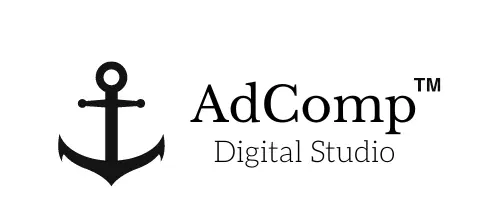
Demystifying Digital Marketing ROI: Understanding the Metrics that Matter
In the contemporary digital era, grasping the intricacies of return on investment (ROI) in marketing endeavors is pivotal for success. With businesses increasingly directing their attention towards digital avenues, comprehending how to gauge and enhance ROI has emerged as a cornerstone of efficient marketing strategies.
Table of Contents
ToggleDefining ROI in the Digital Marketing Realm
In the realm of digital marketing, ROI delineates the gauge of profitability garnered from investments in online advertising and promotional endeavors vis-à-vis the costs incurred. It encapsulates the financial outcomes attained through diverse digital channels . The computation of digital marketing ROI entails juxtaposing the revenue generated from these initiatives against the total expenditure, thereby furnishing insights into the effectiveness and efficiency of marketing strategies. Grasping ROI empowers businesses to meticulously evaluate the impact of their digital marketing endeavors and make judicious decisions to optimize resources, fostering sustainable growth in the digital milieu.
By delving into ROI metrics, businesses can pinpoint the digital marketing channels and tactics that yield the most robust returns, thereby enabling informed resource allocation. Furthermore, a profound comprehension of digital marketing ROI fosters the crafting of data-driven strategies aimed at maximizing profitability and attaining enduring business objectives. Ultimately, ROI serves as a pivotal performance gauge in evaluating the triumph and effectiveness of digital marketing campaigns, steering businesses towards optimal marketing investments and sustainable expansion.
Essential Metrics to Gauge Digital Marketing ROI
Digital marketing ROI encompasses a myriad of metrics that proffer insights into the efficacy of your campaigns. Among these metrics, conversion rate, customer acquisition cost (CAC), customer lifetime value (CLV), return on advertising spend (ROAS), and website traffic and engagement emerge as pivotal indicators of success.
Conversion Rate
The conversion rate delineates the percentage of website visitors who undertake a desired action, be it making a purchase or completing a form. A soaring conversion rate signifies that your digital marketing endeavors efficaciously coax users into taking the desired action, thereby propelling ROI.
Customer Acquisition Cost (CAC)
CAC alludes to the expenditure associated with procuring a new customer. By dividing the total cost of acquisition by the number of new customers gained, businesses can ascertain the efficacy of their marketing campaigns in garnering new leads and customers.
Customer Lifetime Value (CLV)
CLV epitomizes the cumulative revenue anticipated from a customer over their lifespan. By juxtaposing CLV with CAC, businesses can gauge whether their marketing endeavors engender profitable long-term relationships with customers.
Return on Advertising Spend (ROAS)
ROAS is a way of quantifing the revenue generated for each dollar spent on advertising. A robust ROAS signifies that your advertising campaigns are furnishing substantial returns on investment, whereas a tepid ROAS may signify inefficiencies necessitating optimization.
Website Traffic and Engagement
Monitoring metrics related to website traffic and engagement, like the number of visits, page views, and time spent on the site, proffers invaluable insights into the efficacy of your digital marketing endeavors in engendering user engagement and interest.
Illustrative Case Studies
Case studies serve as potent persuasion tools by illustrating the potential returns on investment attainable through effective digital marketing strategies. Witnessing concrete instances of businesses achieving substantial ROI can instill confidence and galvanize decision-makers to invest in analogous initiatives.
Case studies facilitate the examination of both triumphant and unsuccessful campaigns, bestowing invaluable insights into what works and what doesn’t in the domain of digital marketing. By analyzing diverse case studies, businesses can distill best practices, sidestep common pitfalls, and refine their own strategies to maximize ROI. Incorporating real-life examples and case studies into discussions regarding digital marketing ROI enhances comprehension, fortifies credibility, and empowers businesses to make judicious decisions that yield measurable results.
Strategies to Augment Digital Marketing ROI
To optimize ROI, it is imperative to implement strategic approaches tailored to your business objectives. Audience segmentation, content personalization, marketing automation, and continual monitoring and optimization are among the pivotal strategies to contemplate.
Content Personalization
Content personalization constitutes a cornerstone of contemporary digital marketing strategies, enabling businesses to tailor their messaging to individual preferences and behaviors. By leveraging data insights, marketers can concoct customized experiences that resonate with specific audience segments, propelling higher engagement and conversion rates. Personalized content fosters deeper connections with consumers by addressing their unique needs, interests, and pain points, ultimately culminating in heightened brand loyalty and customer satisfaction. Through dynamic content delivery across diverse channels like email, website, and social media, businesses can dispense pertinent messages at the opportune moment, maximizing the efficacy of their marketing endeavors. Embracing content personalization not only amplifies ROI but also positions brands as customer-centric and receptive to evolving consumer demands in the cutthroat landscape of today.
Marketing Automation
Marketing automation tools are effective in streamlining tasks that are repetitive in nature, such as email marketing, social media posting, and lead nurturing, enabling you to reach your audience at the right moment with the right message. By automating workflows and processes, businesses can amplify efficiency and efficacy, ultimately propelling ROI.
Overcoming Hurdles in Measuring Digital Marketing ROI
While measuring ROI is imperative, it is not devoid of challenges. Attribution modeling, data integration and analysis, and tracking offline conversions are among the common hurdles businesses encounter when evaluating the impact of their digital marketing endeavors.
Attribution Modeling
Attribution modeling encompasses delineating which touchpoints and channels contribute to conversions and revenue. Given the proliferation of digital channels and devices, accurately attributing conversions can be intricate but is imperative for comprehending the true ROI of your marketing campaigns.
Tracking Offline Conversions
Tracking offline conversions such as store visits and phone calls stemming from online interactions presents an additional layer of complexity in measuring digital marketing ROI. Implementing solutions like call tracking and store visit attribution can help bridge the gap between online and offline channels, furnishing a more accurate depiction of ROI.
The Future of Digital Marketing ROI: Emerging Trends and Technologies
As technology evolves, so do the tools and methodologies available for measuring and maximizing digital marketing ROI. Let’s delve into some emerging trends and technologies shaping the future of digital marketing ROI.
By demystifying Digital Marketing ROI and implementing effective strategies, businesses can obtain meaningful results and sustainable expansion. Through a fusion of insightful metrics, strategic approaches, and ongoing optimization, you can navigate the ever-evolving digital landscape with confidence and precision. However, the journey towards optimizing digital marketing ROI is not devoid of questions and uncertainties.
Frequently Asked Questions
How do you calculate ROI in digital marketing?
Calculating ROI in digital marketing involves a straightforward yet crucial formula. You divide the net profit generated from digital campaigns by the total cost of those campaigns and express the result as a percentage. This calculation provides a clear picture of the returns garnered from your digital marketing investments.
What is a good ROI for digital marketing campaigns?
Determining a “good” ROI for digital marketing campaigns isn’t a one-size-fits-all proposition. The ideal ROI varies based on factors such as industry, business objectives, and the specific type of campaign. While a positive ROI indicates profitability, what constitutes a satisfactory ROI hinges on your unique goals and benchmarks. It’s imperative to establish clear objectives and gauge ROI against them to ascertain success.
How can I enhance my digital marketing ROI?
Improving digital marketing ROI necessitates a multifaceted approach that is aligned to your business goals and target audience. Strategies like refining audience segmentation, enhancing content personalization, optimizing conversion paths, and incessantly monitoring and tweaking campaigns based on performance data can all contribute to maximizing ROI. By iteratively refining your tactics and staying attuned to evolving consumer behaviors, you can continuously enhance your digital marketing ROI.
What role does attribution play in measuring digital marketing ROI?
Attribution plays a pivotal role in measuring digital marketing ROI by elucidating the contribution of various touchpoints and channels to conversions and revenue. Accurate attribution enables businesses to discern the most effective channels and allocate resources judiciously. Whether employing first-touch, last-touch, or multi-touch attribution models, understanding the customer journey is indispensable for optimizing ROI and refining marketing strategies.
